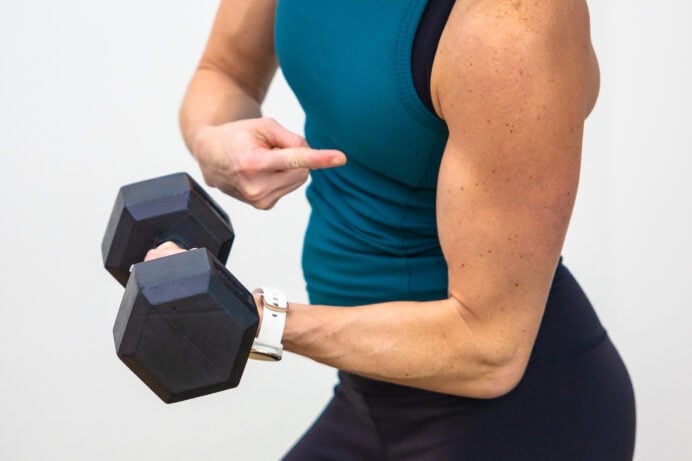
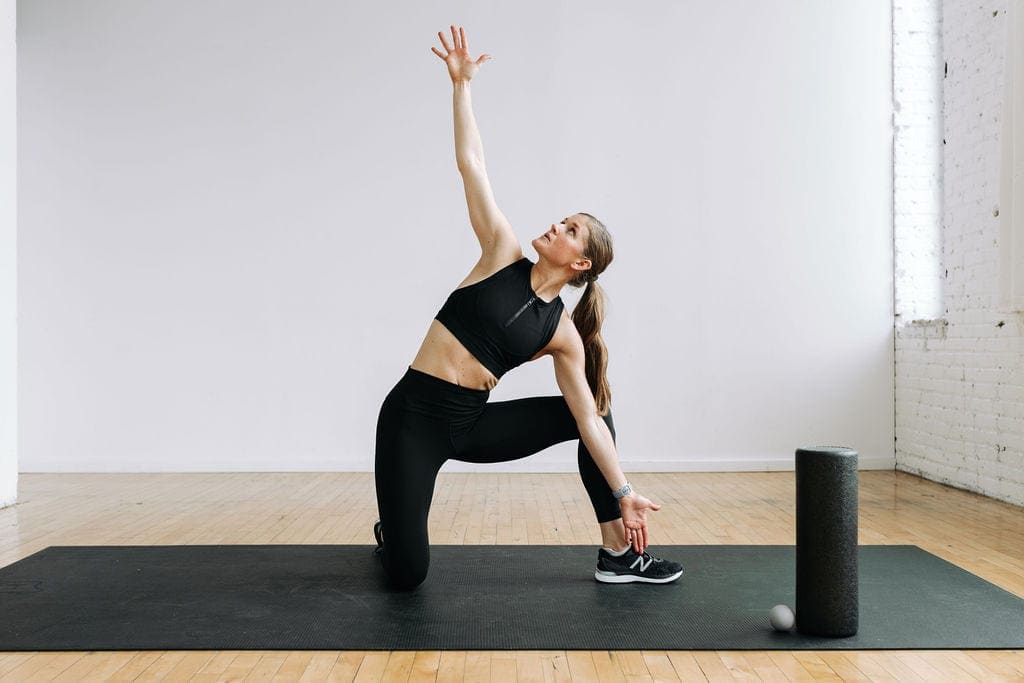
10-Minute Morning Stretch Routine (Foam Roll + Stretch)
Start your day with this energizing and effective 10-minute morning stretch routine. These seven stretches will boost your energy levels and reduce stress. Increase mobility, reduce low back pain, open tight hips, speed up muscle recovery and reduce your risk of injury with this quick stretch routine.
Mobility and recovery are key components of overall functional fitness, which is why I’ve started doing this 10-minute morning stretch routine daily.
Morning movement in particular is a great way to reduce stress, boost your energy and kickstart your metabolism in the morning.
This morning stretch routine has seven exercises to release tight, sore muscles and challenge your mobility. This is my go-to workout when I’m tired and sore.
Gently wake up your body and work out any muscle knots or tight spots that might have settled in overnight so you can move pain-free throughout the day.
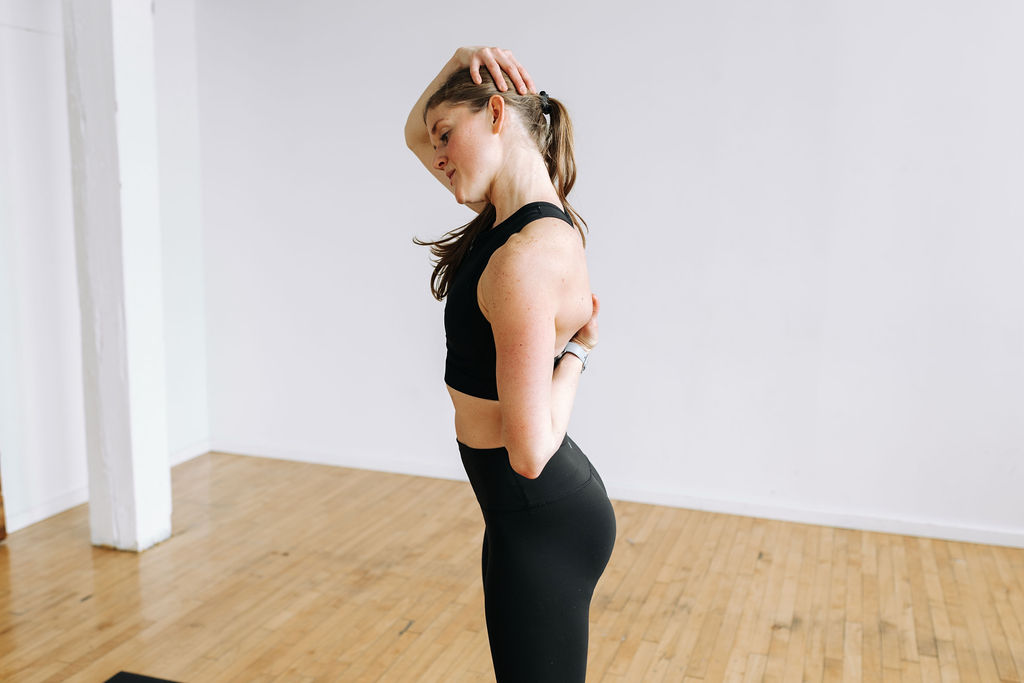
10-Minute Morning Stretch Routine
Get ready for the day with this 10-minute morning stretch routine.
This workout includes seven stretches to loosen stiff joints, improve range of motion and reduce risk of injury.
I suggest incorporating active recovery workouts like this one to your home workout plan 1-2 times per week to protect and maintain healthy joints and muscles.
Workout Equipment:
A foam roller and optional lacrosse ball or tennis ball. I’ll use a lacrosse ball for 1-2 stretches, but you can sub a tennis ball.
Workout Instructions:
Follow along with the guided Morning Stretch Routine on YouTube, led by certified personal trainer, Lindsey Bomgren.
Your Workout Looks Like This:
- 7 Stretches
- Timed Intervals (Hold each stretch for about 60 seconds. Note: hold any tender spot or trigger point for 30 seconds.)
- Perform All 7 Stretches x1 Set

Prefer to Watch On YouTube?
Workout Outline
- Foam Roller Upper Back Roll
- Hip/Groin Roll and Quad Roll and Glute and Piriformis Roll
- Child’s Pose with Arm Extension or Thoracic Spine Extension on Foam Roller
- Couch Stretch
- Half Kneeling Hip Opener
- Neck and Trap Stretch
- Lacrosse Ball for Upper Back and Shoulder Mobility
7 Morning Stretches To Start Your Day
Foam Roller Upper Back Roll
Targets: Upper back and shoulders.
A lot of people tend to carry their stress in the upper back and shoulder area. This is a great way to work out knots, kinks or tightness in your upper back and shoulders.
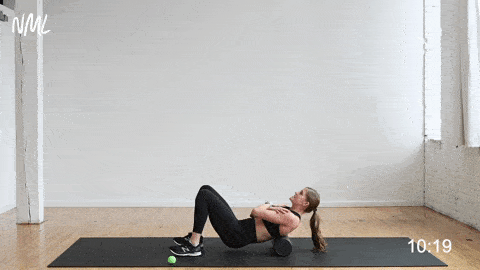
How To Do An Upper Back Roll On A Foam Roller
- Sit on the floor with the foam roller placed on the upper back (around the bottom of your sports bra), resting your hands across your chest or behind your head.
- With knees bent, both heels flat on the floor and glutes slightly lifted off the mat, move the roller up your back towards your shoulders.
- Then exhale, contracting your abs as you lift your neck and shoulders slightly up to roll the foam roller back down to the mid-back. Think of doing a half-crunch as the roller goes down the back.
- Then return to the starting position and repeat.
Hip Flexor/Groin Roll And Quad Roll
Targets: The lower anterior chain (front side of the body) — hips, hip flexors, groin and quads.
This is personally where I spend the most time foam rolling. I have really tight hips and hip flexors, so I’ll spend a few breaths slowly shifting back and forth on the foam roller to open the hips.
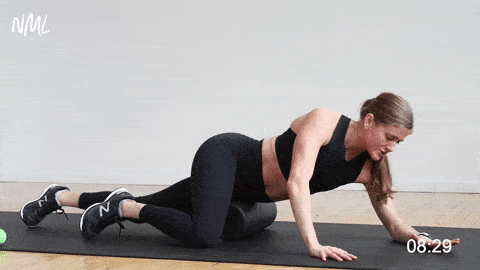
How To Do A Quadriceps Roll On A Foam Roller
- Lie face down with your right leg on top of the foam roller so it’s against your upper thigh.
- Shift as much weight onto the foam roll as tolerable.
- While trying to relax the muscles of the thigh, roll over the area between your hip and knee.
Child’s Pose With Arm Extension Or Thoracic Spine Extension On Foam Roller
Targets: The posterior chain (backside of the body) — low back, upper back, and thoracic spine (from tailbone to neck).
You should feel a stretch along your spine as you lengthen from tailbone to fingertips. This stretch is also great for opening the hips.
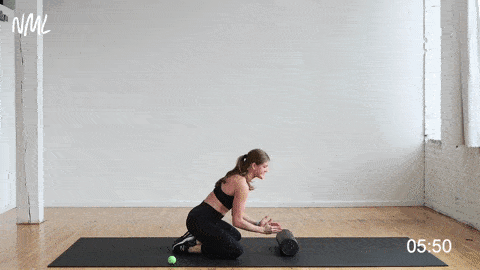
How To Do Thoracic Spine Extension On A Foam Roller
- Start in child’s pose position; big toes to touch, hips open, pushing hips back towards your heels. Place your hands on the foam roller, thumbs up towards the ceiling.
- Roll the arms forward, extending your arms as far away from your hips as possible and allowing your head to fall between your arms. Maintain a neutral lower back.
- Hold the extension for 5-10 seconds, continuing to reach your fingertips away from your body.
- Then roll the hands back towards the body and repeat the extension and roll out.
Couch Stretch
Targets: Hips (specifically the hip flexors, which are the muscles in the front of your hip) and quads.
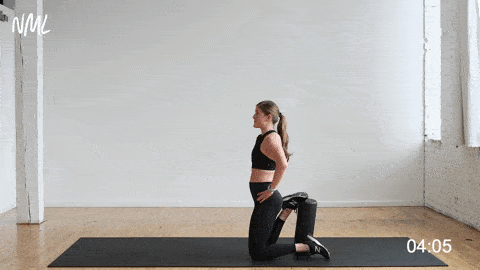
How To Do The Couch Stretch
- Bend your right knee and place your right shin up close to the bottom of your couch; right foot on top of the couch cushion, shoelaces down. I’m using a foam roller in the example above.
- Keep your right thigh in line with your body. Shoulders stacked over the hips and the right knee.
- Keep your hips square and facing forward. Keep a nice long spine from head to tailbone as you hold this stretch for 30-60 seconds.
Half Kneeling Hip Opener
Targets: Inner thighs (adductors), hips, glutes, shoulders and chest.
Note: you can straighten your leg for an additional hamstring stretch.
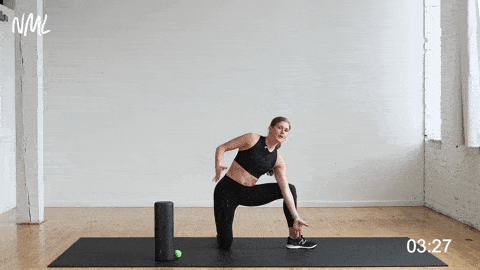
How To Do Half Kneeling Hip Openers
- Start kneeling, both knees on the ground, shoulders stacked over hips and knees.
- Step your right foot forward into a half kneeling position (kneeling on left knee).
- Guide your right leg towards the right side of your body, to a 45-degree angle or if possible to a 90-degree angle so your right hips is in line with your right knee.
- Guide your right hand down your right leg, striving for fingertips to meet right ankle or ground (palm out). Simultaneously, extend your left hand straight overhead as you hold this position for 30-60 seconds.
Neck And Trap Stretch
Targets: All the muscles in your neck that support your head and upper spine — targeting the neck and upper trapezius muscles.
If you get tight, hunched shoulders when you’re stressed, this stretch is for you.
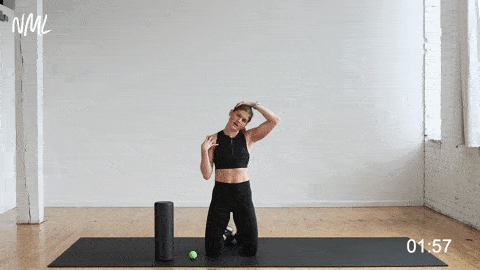
How To Do A Neck And Trap Stretch
- Start standing or kneeling with feet/knees shoulder-width apart underneath you.
- Gently place your right hand on the top left part of your head to guide your right ear towards your right shoulder; opening up the left side of your neck.
- Option to hold here or increase the stretch by wrapping your left arm behind you. Reach the left hand towards the middle of your back (palm facing out away from the body).
Lacrosse Ball For Upper Back And Shoulder Mobility
Targets: Scapular muscles — upper back and shoulder muscles and shoulder blades.
Using a lacrosse ball for self-myofascial release (aka, self-massage), can help break up the connective tissue surrounding your muscles that can get rigid from prolonged sitting, poor posture, or exercising.
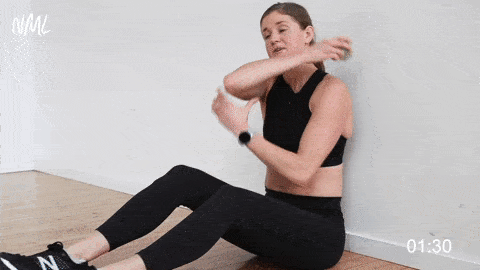
How To Use A Lacrosse Ball For Upper Back And Shoulder Mobility
- Start seated or stand with your back against a wall.
- Place a lacrosse ball between the wall and your back. Position the ball on one side of your spine. Note, the lacrosse ball should never roll directly onto your spine.
- Slowly begin to shift the ball around your upper back until you find a tender spot. When you find a tender spot, hold for 30-60 seconds to release the tight or knotted muscles.
Morning Stretch Routine FAQs
Stretching first thing in the morning has a lot of benefits and is a great way to start the day. Morning exercise can warm up tight joints, boost energy levels and metabolism, reduce stress, and get you ready for the day. That said, if you don’t have time to stretch in the morning – no worries! The best mobility routine is the one you can be consistent about. I recommend working on stretching and mobility when it best fits into your schedule.
Whether you’re new to exercise or a seasoned athlete, you can benefit from a regular stretching routine. An effective stretch routine should only take about 5 to 10 minutes. By incorporating daily mobility exercises, you’ll notice: increased range of motion, reduced muscle soreness, improved posture, reduced risk of injury and reduced joint pain. Stretching specific muscle groups (like the shoulders or hips) promotes proper alignment, reduces musculoskeletal pain and improves your overall athletic performance.
More Stretches
Stretch RoutinesPin this Morning Stretch Routine
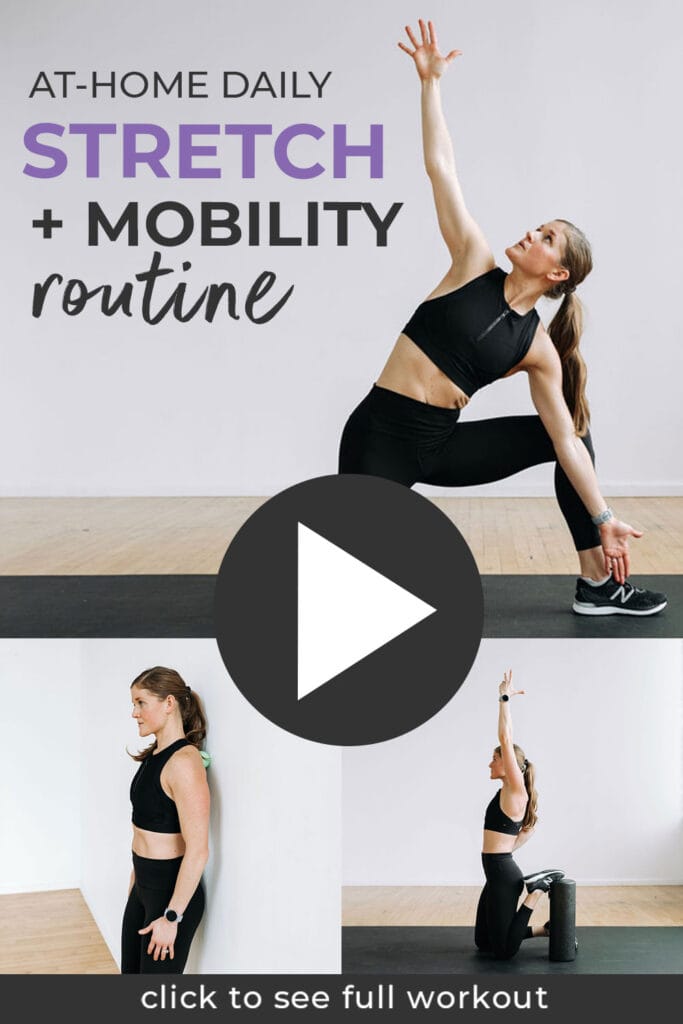
This post includes affiliate links. I do make a small commission for products purchased using these links (at no additional cost to you). Thank you for supporting Nourish Move Love, making the content you see on this blog possible.










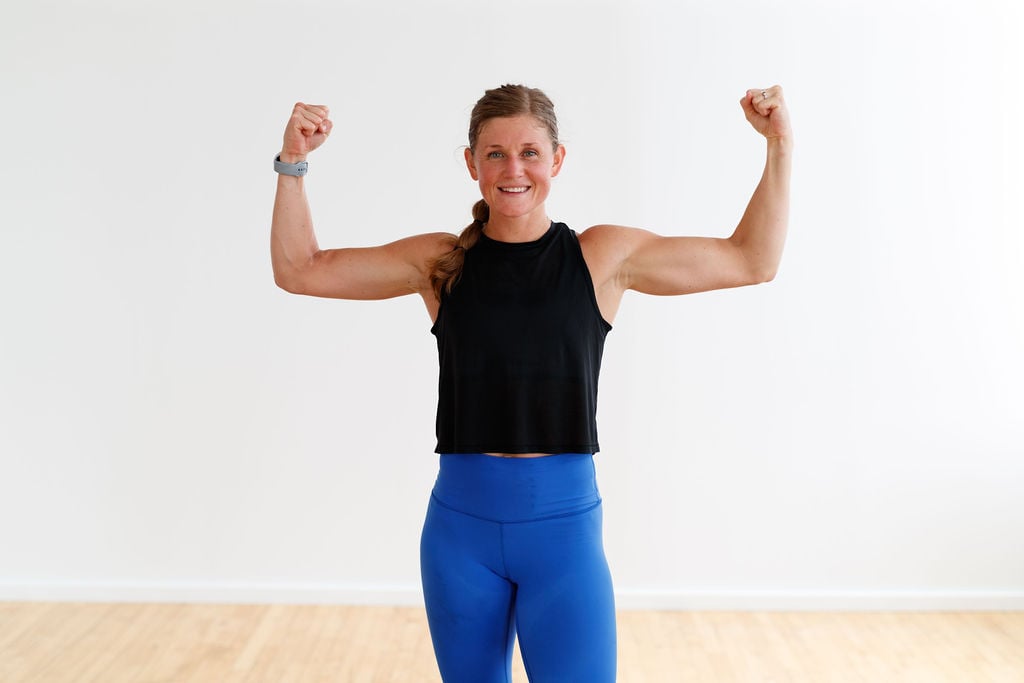
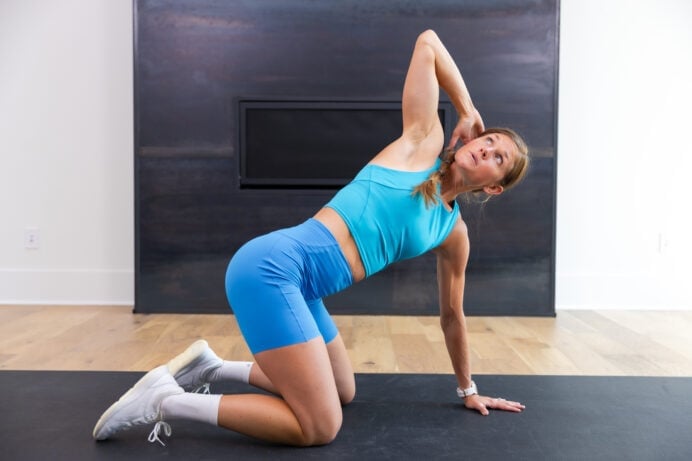
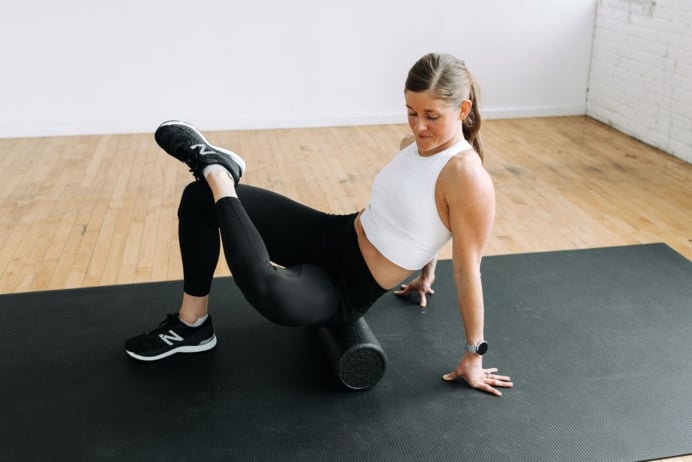
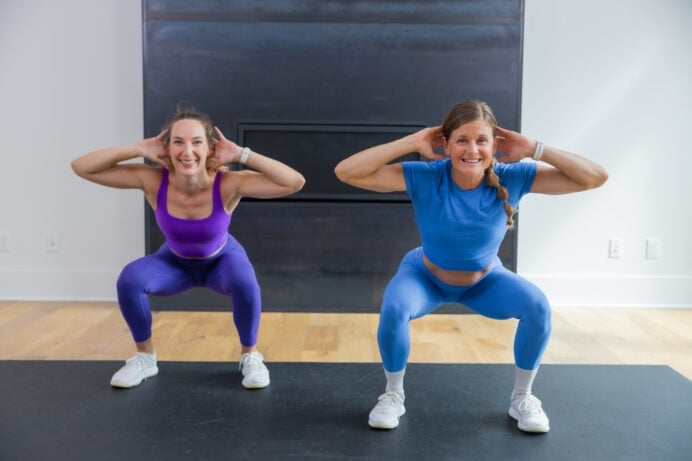
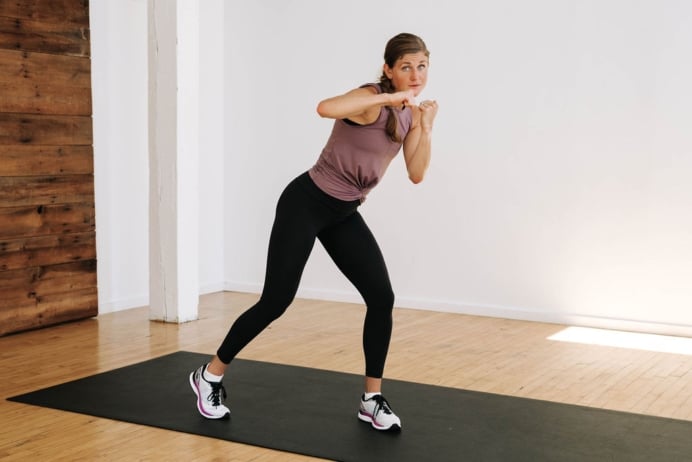
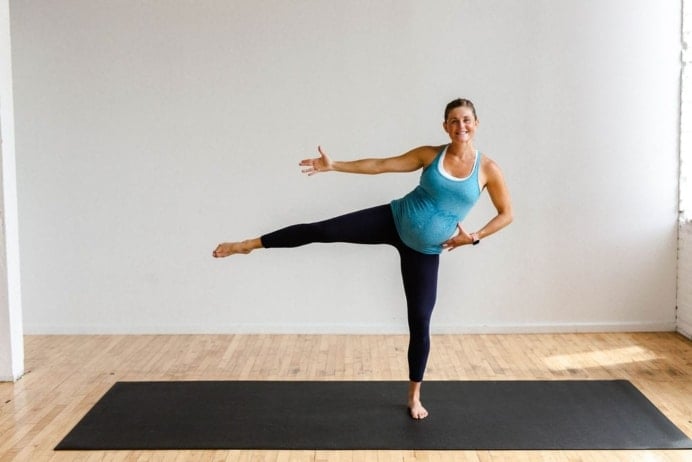
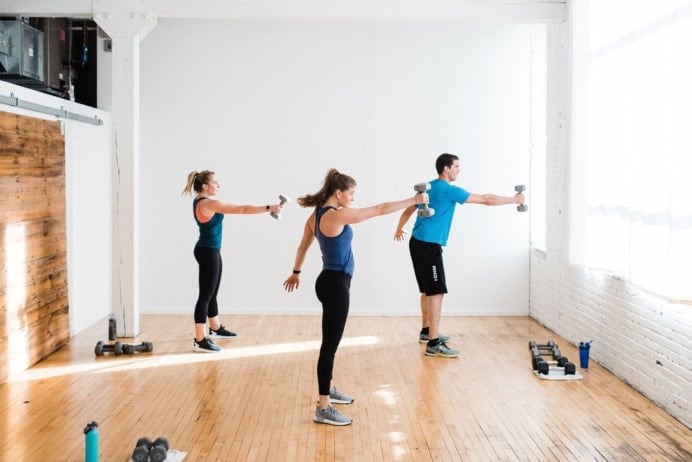
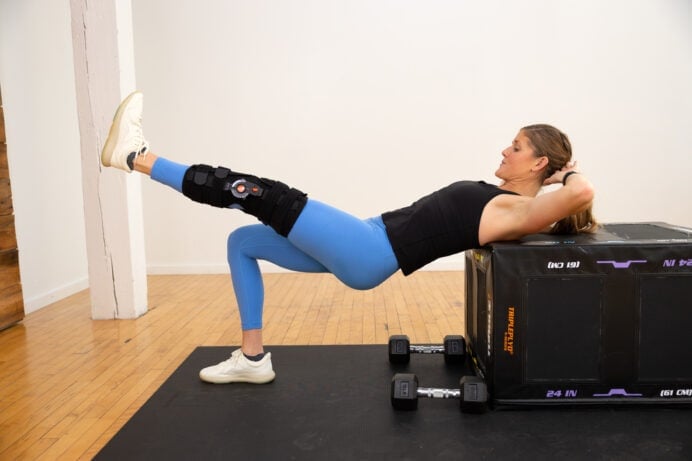
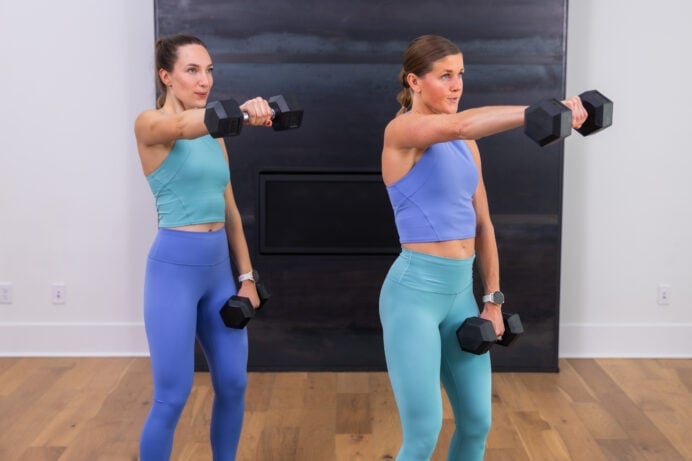
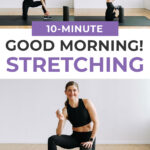
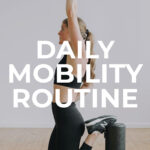
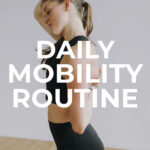
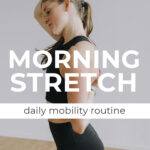
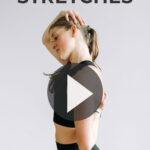
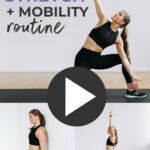
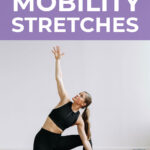
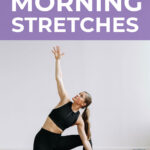
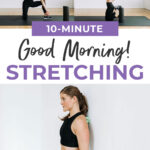
Hi Lindsay! I recently discovered your website and at home workout videos. I absolutely love following along with your full length workout videos! I appreciate that they are 45 minutes or less! The fact that you are from MN and love yourself some Jesus is icing on the cake 😉 (something we both have in common). Anyway, I wanted to take a moment to thank you for all that you do to bring physical and spiritual fitness into our homes! Keep up the good work!
Becky
Becky! Thank you for your kind words! I’m so glad you found my workout videos and are putting them to good use! Always fun to connect with other MN, Christian Women! Keep up the great work and thanks for following along! -Lindsey